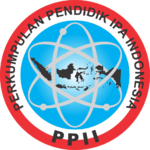THE EFFECT OF CONTEXTUAL TEACHING AND LEARNING MODEL THROUGH ENERGY IN LIVING SYSTEMS VIDEO ON STUDENTS’ ACHIEVEMENT
DOI:
https://doi.org/10.26740/jppipa.v7n1.p30-39Keywords:
Contextual teaching and learning model, Energy in living systemsAbstract
This study aims to determine students’ achievement after applying the Contextual Teaching and Learning (CTL) learning model with the SETS approach through Energy-in-Living Systems video. The method was pre-experimental with one-group pretest-posttest design. The sampling method was purpose sampling involving class VII-H students at SMPN 26 Surabaya as many as 22 people. Data was collected through observation sheets (student activities and learning implementation), learning outcomes tests, and response questionnaires. Observation sheets were analyzed using a Likert scale (score range 1-4), learning outcomes tests included pretest and posttest (15 questions each) which were analyzed using the N-Gain test, and the response questionnaire using the Gutmann scale (Yes and No ). The results of student activities and the implementation of learning in two meetings were categorized very well. The learning outcomes of 15 students reached a percentage of 68% (criteria: high) and 7 students reached a percentage of 32% (criteria: moderate). The increase in the N-Gain score was obtained by 0.76 which was categorized as high and a total of 22 students completed so that the classical mastery of learning reached 100%. The responses of students who are interested in the application of the CTL model through video obtained an average percentage of 91.6%. It is concluded that the application of the CTL learning model with the SETS approach through Energy-in-Living Systems video was appropriate and succeeded in improving students’ achievement.
References
Arikunto, S. (2013). Prosedur Penelitian Suatu Pendekatan Praktik: Edisi Revisi. PT. Rineka Cipta.
Arikunto, S. (2016). Dasar-dasar Evaluasi Pendidikan (Edisi 2). PT. Bumi Aksara.
Riduwan, & Akdon. (2013). Rumus dan Data Dalam Analisis Statistika. Alfabeta.
Sugiyono. (2015a). Metode Penulisan Pendidikan Pendekatan Kuantitatif, Kualitatif, dan R&D. Alfabeta.
Sugiyono. (2015b). Statistika untuk Penelitian. Alfabeta.
Wahyuningsih, E. S. (2020). Model Pembelajaran Mastery Learning Upaya Peningkatan Keaktifan Dan Hasil Belajar Siswa (I). Deepublish. https://books.google.co.id/books?id=3Bz-DwAAQBAJ
Wisudawari, A. W., & Sulistyowati, E. (2015). Metodologi Pembelajaran IPA. PT Bumi Aksara: Jakarta.
Downloads
Published
How to Cite
Issue
Section
 Abstract views: 557
,
Abstract views: 557
, PDF Downloads: 457
PDF Downloads: 457











